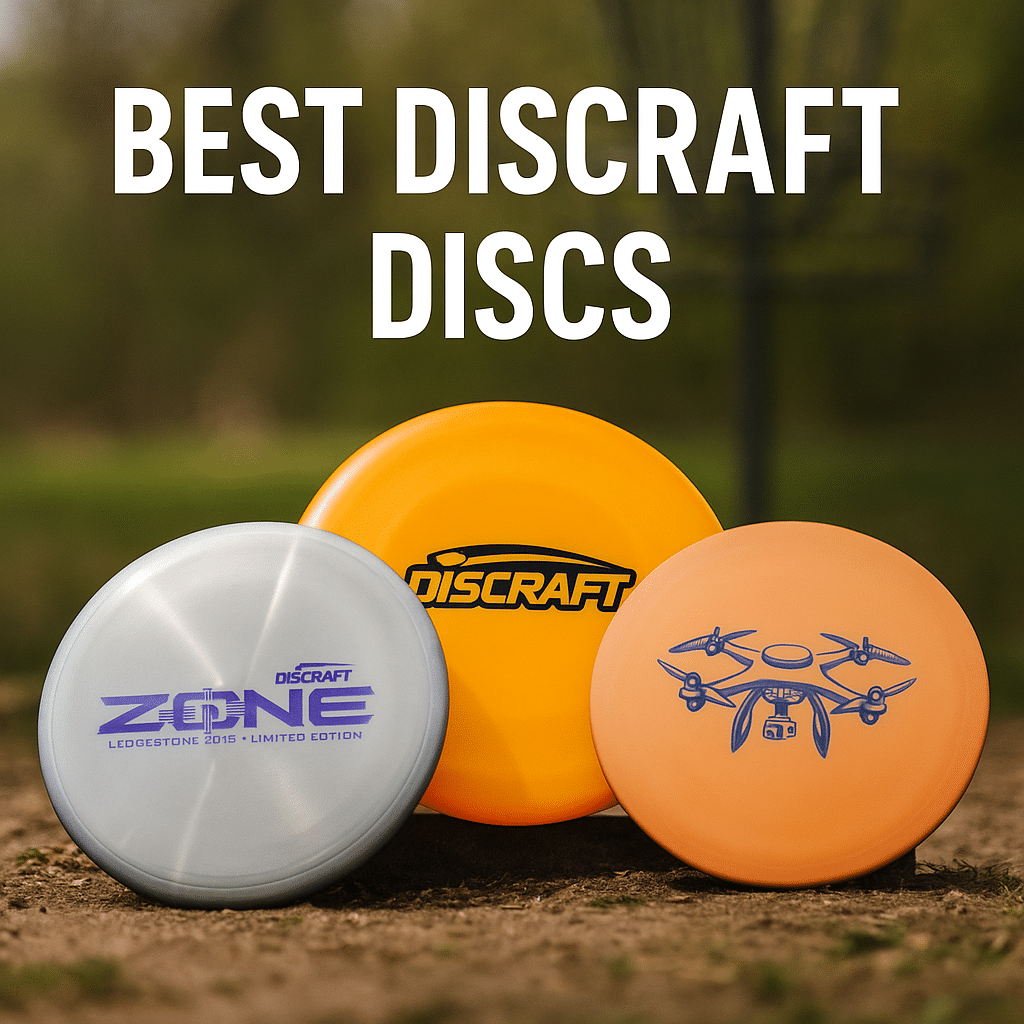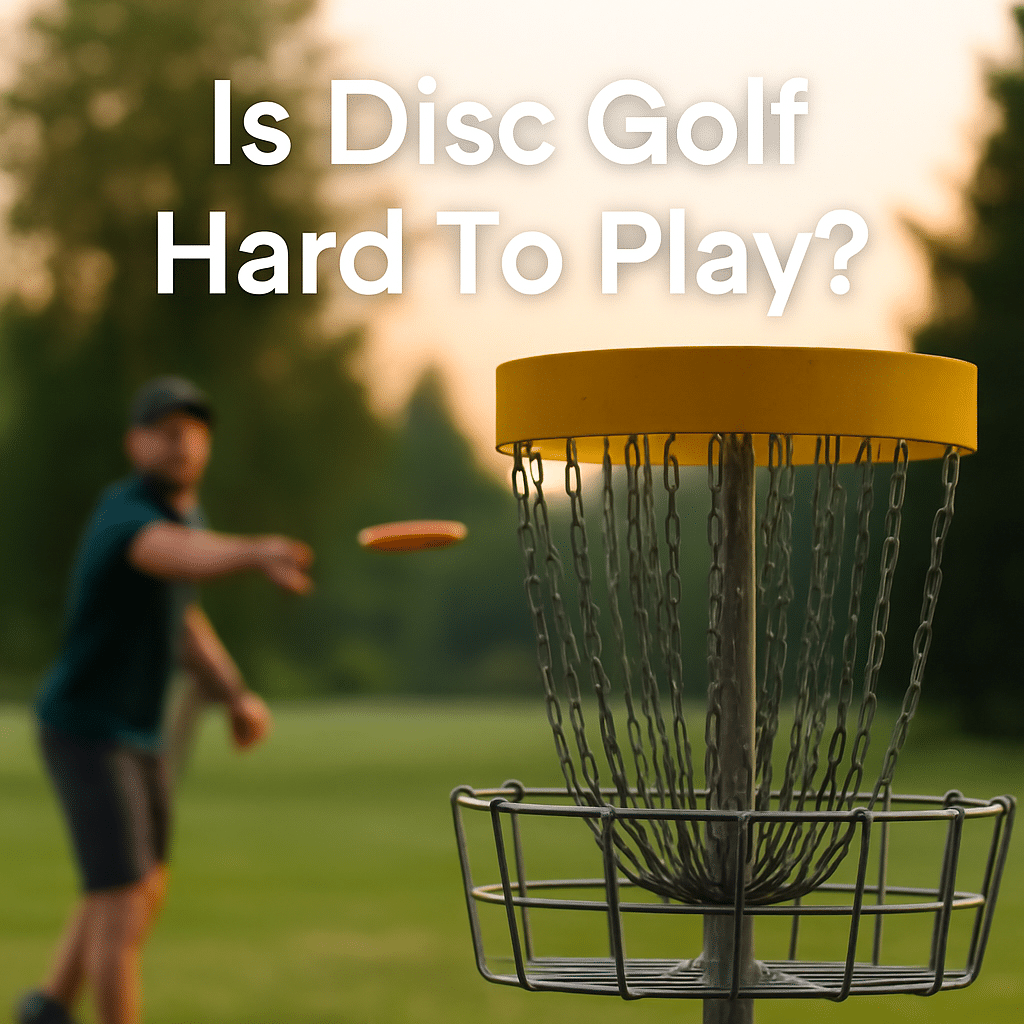
Looking for the best MVP discs to throw in 2025? Whether you’re a James Conrad fan or just love the consistency of gyro technology, MVP continues to drop some of the most innovative and dependable discs in the game. From torque-resistant drivers to glide-heavy putters, I’ve tested and bagged several MVP molds over the years—and these are the ones that really stand out.
In this guide, I’ll break down the best MVP discs across all categories, share real-world performance notes, and help you find the right disc for your throwing style. Let’s jump in.
Quick List – Top MVP Discs
MVP Nomad – 2 / 4 / 0 / 1
The MVP Nomad is a stable, beaded putter with a clean release and consistent fade. Off the tee, it holds a neutral line with just enough fade to land soft. In the circle, it has that smooth push feel with spin-friendly feedback. It’s a solid everyday putter that can handle power putts and driving lines alike.
MVP Glitch – 1 / 7 / 0 / 0
The MVP Glitch has taken the disc golf world by storm. It’s basically a high-glide, catch disc that you can throw 200+ feet without any effort. Ideal for beginners, warm-ups, long putts, or smooth approaches. It’s a disc that practically floats to the target. I bag it for fun, touch shots, and slow tunnel lines.
MVP Atom – 3 / 3 / -0.5 / 0
The MVP Atom is the kind of disc that flies exactly how you release it. It’s dead straight when fresh, and once beat in, it becomes floaty with just a touch of turn. I’ve used it for approaches and straight tee shots under 250 ft. If you like the Proxy but want a tiny bit more stability, give the Atom a shot.
MVP Reactor – 5 / 5 / -0.5 / 1.5
The MVP Reactor replaced several older mids in MVP’s lineup, and it does not disappoint. It’s super workable—hyzers, straight shots, turnovers—it handles all of them. This is the mid I’d hand to someone who wanted just one mold for everything inside 300 feet.
MVP Deflector – 5 / 3.5 / 0 / 4
If you’re looking for a mid that can handle serious torque or fight heavy winds, the MVP Deflector is the one. It’s a forehand-friendly, very overstable mid that dumps hard at the end. Perfect for skip shots, forced hyzers, and technical scramble lines.
MVP Terra – 8 / 5 / 0 / 3
The MVP Terra is part of James Conrad’s lineup, and it brings a predictable fade with tons of control. It’s like a more reliable Volt—handles torque better and has a harder fade. I reach for this when I need that skip finish or want to carve hyzer lines through tight fairways.
MVP Tesla – 9 / 5 / -1.5 / 2
The MVP Tesla is a dependable distance driver with a touch of turn and a solid fade. For intermediate arms, it’ll give you nice full-flight S-curves. For power throwers, it’s a controlled straight bomber. I like this for tailwind drives or when I want to hit a long narrow gap cleanly.
MVP Trail – 10 / 5 / -1 / 1
 The MVP Trail is another Conrad line disc that fills the stable-understable driver slot. Great for hyzer flips, slow turnovers, and controlled distance. It’s not flippy out of the box—but it’s easy to manipulate. I’ve used this for shaping lines in woods and hitting smooth landing zones on touchy par 3s.
The MVP Trail is another Conrad line disc that fills the stable-understable driver slot. Great for hyzer flips, slow turnovers, and controlled distance. It’s not flippy out of the box—but it’s easy to manipulate. I’ve used this for shaping lines in woods and hitting smooth landing zones on touchy par 3s.
Final Thoughts
MVP has built a lineup that covers just about every slot in the bag. Whether you’re new to gyro or a longtime fan, these molds are dependable, unique, and built for performance.
Want more brand breakdowns? Check out our reviews of the best Axiom discs and best Discraft discs too.



 The Prodiscus Sparta is Prodiscus’ beadless, throw-anywhere putter. Even with low power and moderate spin it holds a line and finishes gentle—perfect for putts, floaty approaches, and straight tee shots in the woods.
The Prodiscus Sparta is Prodiscus’ beadless, throw-anywhere putter. Even with low power and moderate spin it holds a line and finishes gentle—perfect for putts, floaty approaches, and straight tee shots in the woods. Take the beloved Jokeri and add a bead for extra bite and wear stability. JokeriX is a confident, overstable putt-and-approach option that excels in headwinds and on forehand chips.
Take the beloved Jokeri and add a bead for extra bite and wear stability. JokeriX is a confident, overstable putt-and-approach option that excels in headwinds and on forehand chips. True to its name, the Laseri is a point-and-shoot control driver. It’s neutral with a touch of finish, making it money for hyzer-flips, stand-up fairways, and low-ceiling “laser” shots.
True to its name, the Laseri is a point-and-shoot control driver. It’s neutral with a touch of finish, making it money for hyzer-flips, stand-up fairways, and low-ceiling “laser” shots. The Razeri is a high-speed, overstable driver built for confident power lines, wind, and forehands. Expect late, strong fade and reliable skip—great for placement distance and spike hyzers.
The Razeri is a high-speed, overstable driver built for confident power lines, wind, and forehands. Expect late, strong fade and reliable skip—great for placement distance and spike hyzers. Pyramid brings a mostly flat top and a dependable finishing fade. It’s torque-resistant enough for forehand approaches while still carving clean backhand lines inside 300 feet.
Pyramid brings a mostly flat top and a dependable finishing fade. It’s torque-resistant enough for forehand approaches while still carving clean backhand lines inside 300 feet. Troija is a very overstable, flat-topped approach mid. Think “get-out-of-trouble” beef: spike hyzers, force-over forehands, ground-play skips—when you must finish hard.
Troija is a very overstable, flat-topped approach mid. Think “get-out-of-trouble” beef: spike hyzers, force-over forehands, ground-play skips—when you must finish hard. The Jokeri is a tall, trusty, overstable P&A that shines in wind and on longer driving lines. It’s one of those molds that sticks in the bag because it’s simply reliable.
The Jokeri is a tall, trusty, overstable P&A that shines in wind and on longer driving lines. It’s one of those molds that sticks in the bag because it’s simply reliable. Origo brings a shallower, beadless feel with a straight flight and mild finish. Money for point-and-shoot putts and neutral approaches that need to sit.
Origo brings a shallower, beadless feel with a straight flight and mild finish. Money for point-and-shoot putts and neutral approaches that need to sit.





 The
The  The
The 



 Why it’s an all-timer: The distance driver that set the template: high speed, workable turn, strong fade. Forehand or backhand, it scales with skill.
Why it’s an all-timer: The distance driver that set the template: high speed, workable turn, strong fade. Forehand or backhand, it scales with skill. Why it’s an all-timer: A touch slower and more workable than a Destroyer with easy glide. Great “first fast driver” for players growing into speed 11–12.
Why it’s an all-timer: A touch slower and more workable than a Destroyer with easy glide. Great “first fast driver” for players growing into speed 11–12. Why it’s an all-timer: Torque-resistant, headwind-proof approach disc that every player leans on when they have to stick the landing. FH, BH, or patent-pending, it just obeys.
Why it’s an all-timer: Torque-resistant, headwind-proof approach disc that every player leans on when they have to stick the landing. FH, BH, or patent-pending, it just obeys. Why it’s an all-timer: The control-driver standard. Straight with a reliable finish, easy to pipe fairways, and predictable in mild wind.
Why it’s an all-timer: The control-driver standard. Straight with a reliable finish, easy to pipe fairways, and predictable in mild wind. Why it’s an all-timer: Forehand training wheels that never leave your bag. Trusty fade, wind-fighting stability, and skip-shot magic.
Why it’s an all-timer: Forehand training wheels that never leave your bag. Trusty fade, wind-fighting stability, and skip-shot magic. Why it’s an all-timer: The modern throwing putter. Holds power, carves angles, and putts great—plus it’s the mold behind the “Holy Shot.”
Why it’s an all-timer: The modern throwing putter. Holds power, carves angles, and putts great—plus it’s the mold behind the “Holy Shot.” Why it’s an all-timer: Beaded, stable classic with a mountain of plastic blends. Putts straight with a gentle fade; drives on a rope.
Why it’s an all-timer: Beaded, stable classic with a mountain of plastic blends. Putts straight with a gentle fade; drives on a rope.




 The
The 


 The
The 
 The
The  The
The  The
The 


 The
The 
 Flight: 5 | 5 | 0 | 2 • Stability: Overstable-neutral (true lines, gentle fade)
Flight: 5 | 5 | 0 | 2 • Stability: Overstable-neutral (true lines, gentle fade) Flight: 4 | 5 | −1.5 | 0.5 • Stability: Understable
Flight: 4 | 5 | −1.5 | 0.5 • Stability: Understable Flight: 9 | 3 | 0.5 | 4 • Stability: Very overstable
Flight: 9 | 3 | 0.5 | 4 • Stability: Very overstable Flight: 9 | 5 | −1 | 2 • Stability: Workable-stable
Flight: 9 | 5 | −1 | 2 • Stability: Workable-stable Flight: 9 | 5 | −0.5 | 3 • Stability: Overstable control
Flight: 9 | 5 | −0.5 | 3 • Stability: Overstable control Flight: 12 | 4 | 0.5 | 4 • Stability: Very overstable
Flight: 12 | 4 | 0.5 | 4 • Stability: Very overstable Flight: 2 | 4 | 0 | 0.5 • Stability: Neutral/point-and-shoot
Flight: 2 | 4 | 0 | 0.5 • Stability: Neutral/point-and-shoot Flight: 2 | 4 | 0 | 0.5 • Stability: Neutral/straight
Flight: 2 | 4 | 0 | 0.5 • Stability: Neutral/straight